- filed under: Book Recommendations, Imaginative Play Outdoors
Imaginative Play: Anywhere Artist
One hundred years ago Soviet psychologist and play theorist, Lev Vygotsky, argued that play was a purposeful activity for children. Vygotsky believed that a child’s greatest achievements were possible in play and that imaginative play, in particular, was an opportunity for children to become adaptive, while problem solving ways to use available resources for their own playful benefit.
I mention this to assure you that we have over one hundred years of research to support the significant benefits of imaginative play for healthy child development, and that by allowing your child to simply muck about in the mud you are encouraging creativity and imaginative divergent thinking!
This post is about imaginative play supported by the book, Anywhere Artist- If you are interested in research that has supported our understanding of imaginative play, I’ve listed resources at the bottom of this post that may help your self-study.
Imaginative Play: Anywhere Artist with Mud
Necessity is the mother of invention, or so they say, and boredom can be a powerful tool for creative and imaginative thinking.
When we talk about provocations or invitations as teachers, what we really mean is we are providing a spark, or a material that might invite a new idea or process to be created. Our modern world has little patience for boredom, and parents have become accustomed to staving off boredom at any cost for their children.
Some studies have shown boredom can lead to mindless snacking or reckless behaviours, but recent studies have shown that boredom seems to be a critical ingredient in being able to find your own pleasures, passions, and interests on the way to becoming a life-long learner.
So what to do when your learners complain they are bored? Send them outside to become anywhere artists! Mud is the perfect boredom buster, and easily accessible in just about every backyard, sidewalk crack, and garden.
Mud play is a simple and low prep way to invite children to creatively and independently explore outdoors while allowing them some space to figure out how to make best use of available resources for play.
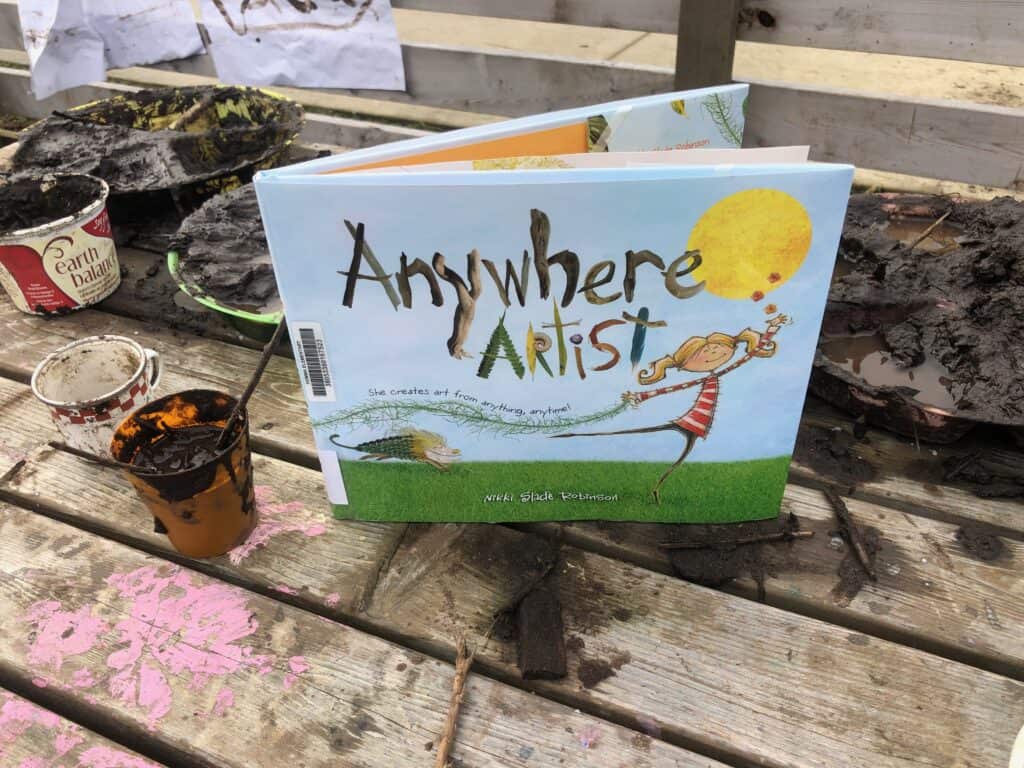
Required Materials for Mud Painting
- dirt
- water
- up cycled plastic tubs or containers (think yoghurt or sour cream tubs)
- paint brushes, or sticks, or broken pencils will do!
- A canvas to paint on: paper, newspaper, cardboard boxes, fences, sidewalks…
Listen to the Anywhere Artist
Thank you to Houghton Mifflin Harcourt publishers for allowing us to share this story online as the creative spark and invitation to inspire your imaginative play at home!
Mud Painting and Mud Play Inspiration
A reminder that mud painting does not have to be pretty! Use old yoghurt tubs and tupperware to mix your dirt, and simply add water for a messy adventure! Paper, sidewalks, fences, boxes, and even the side of your house can be your canvas!
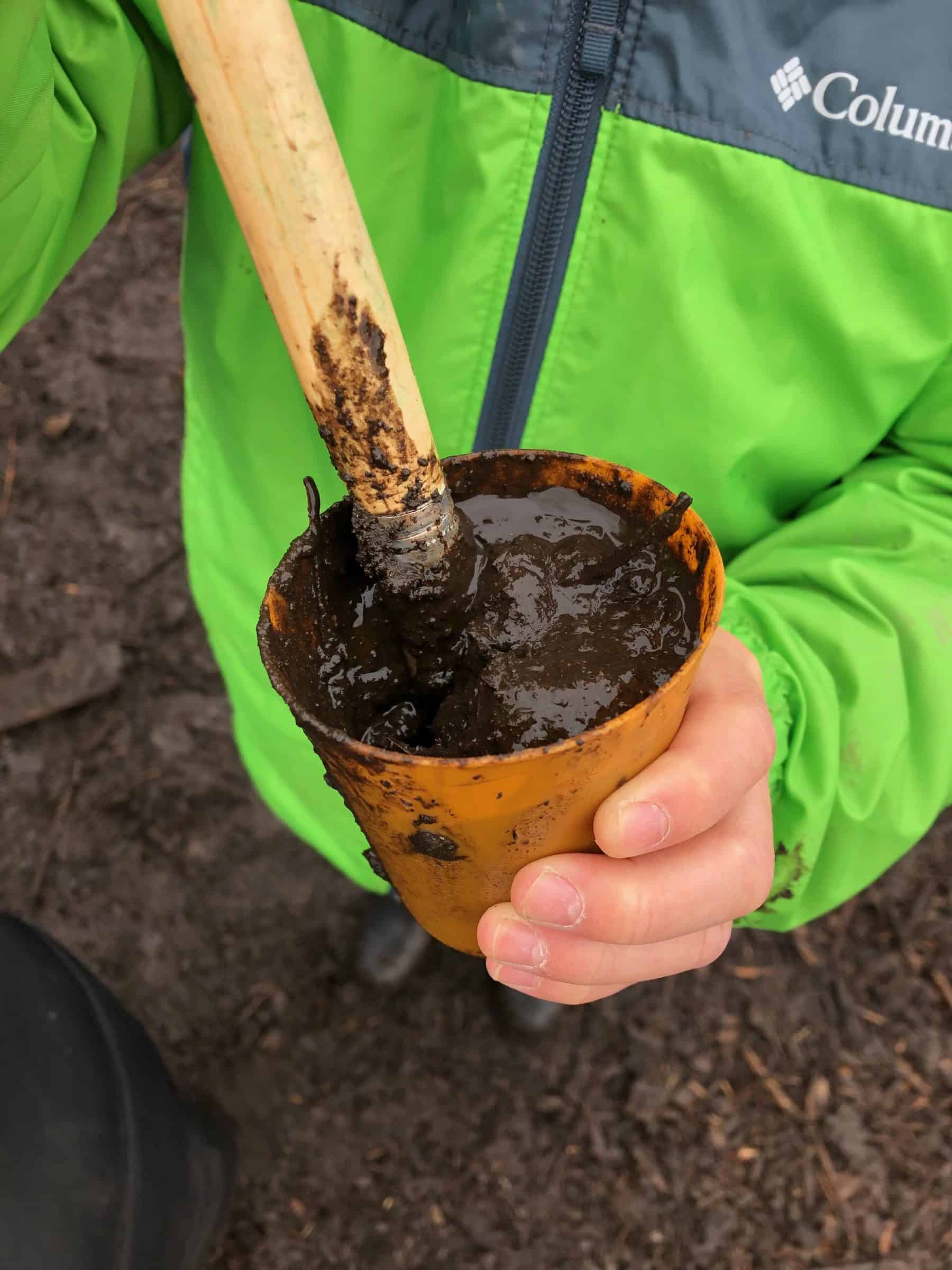
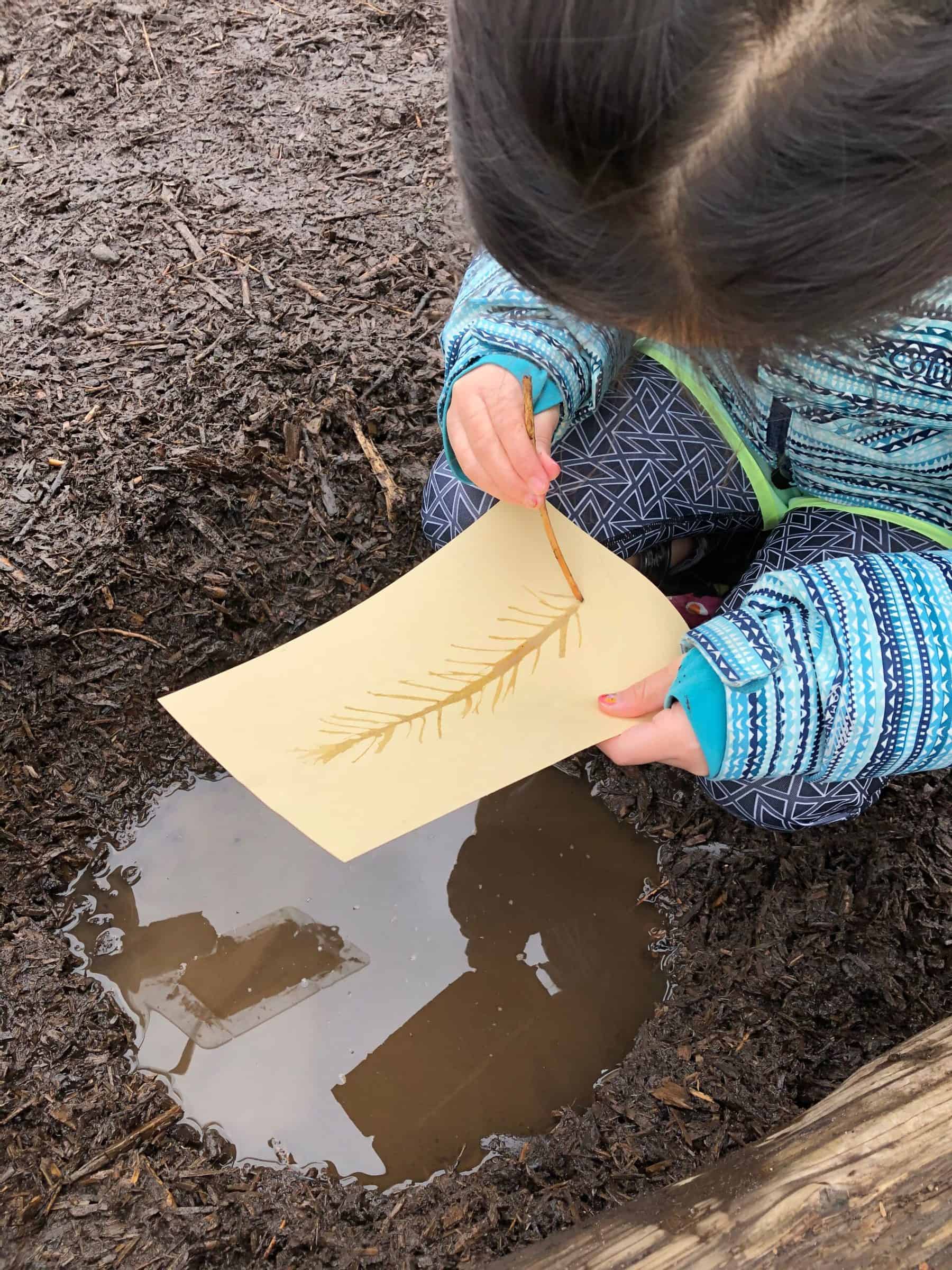
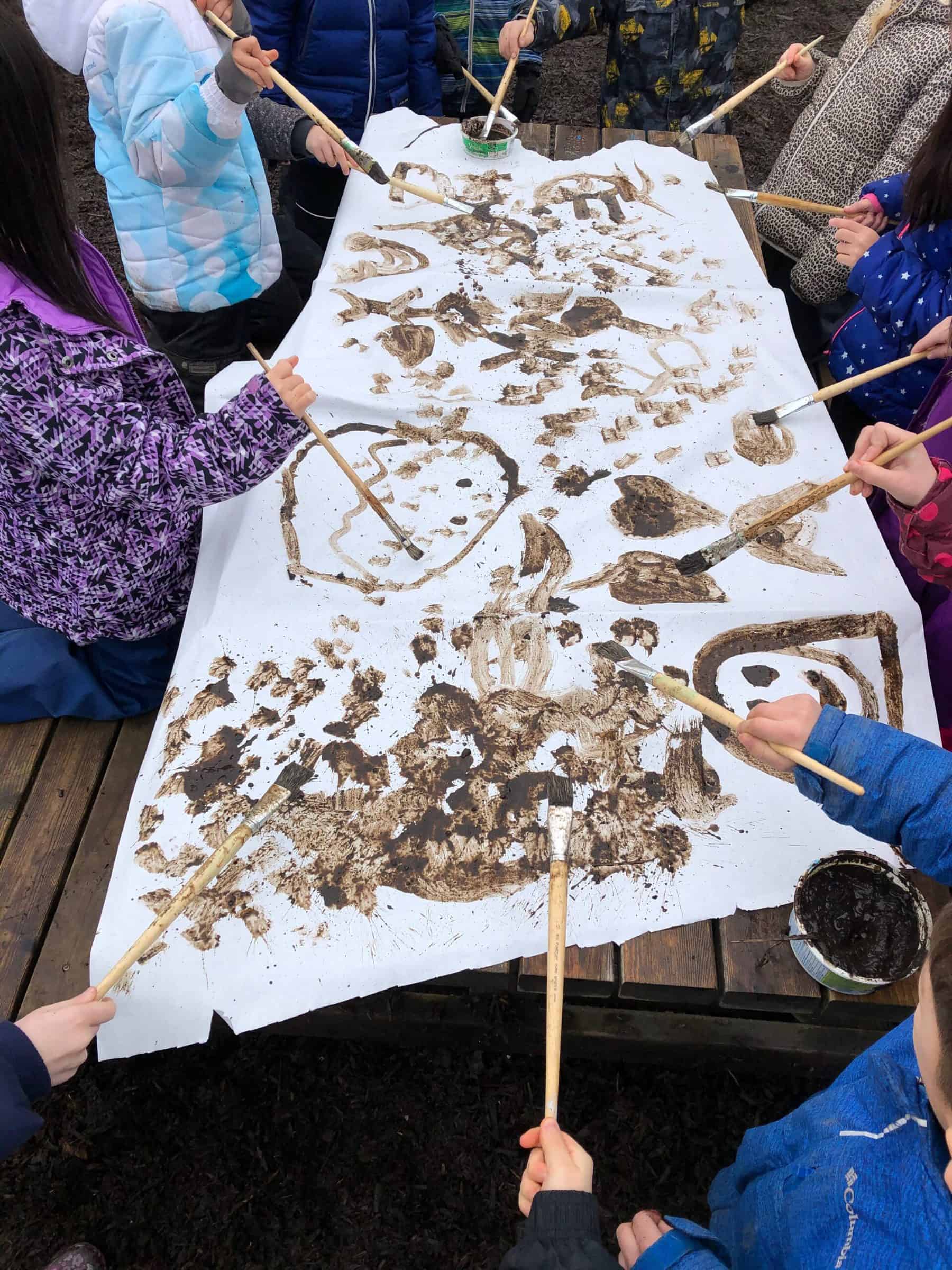

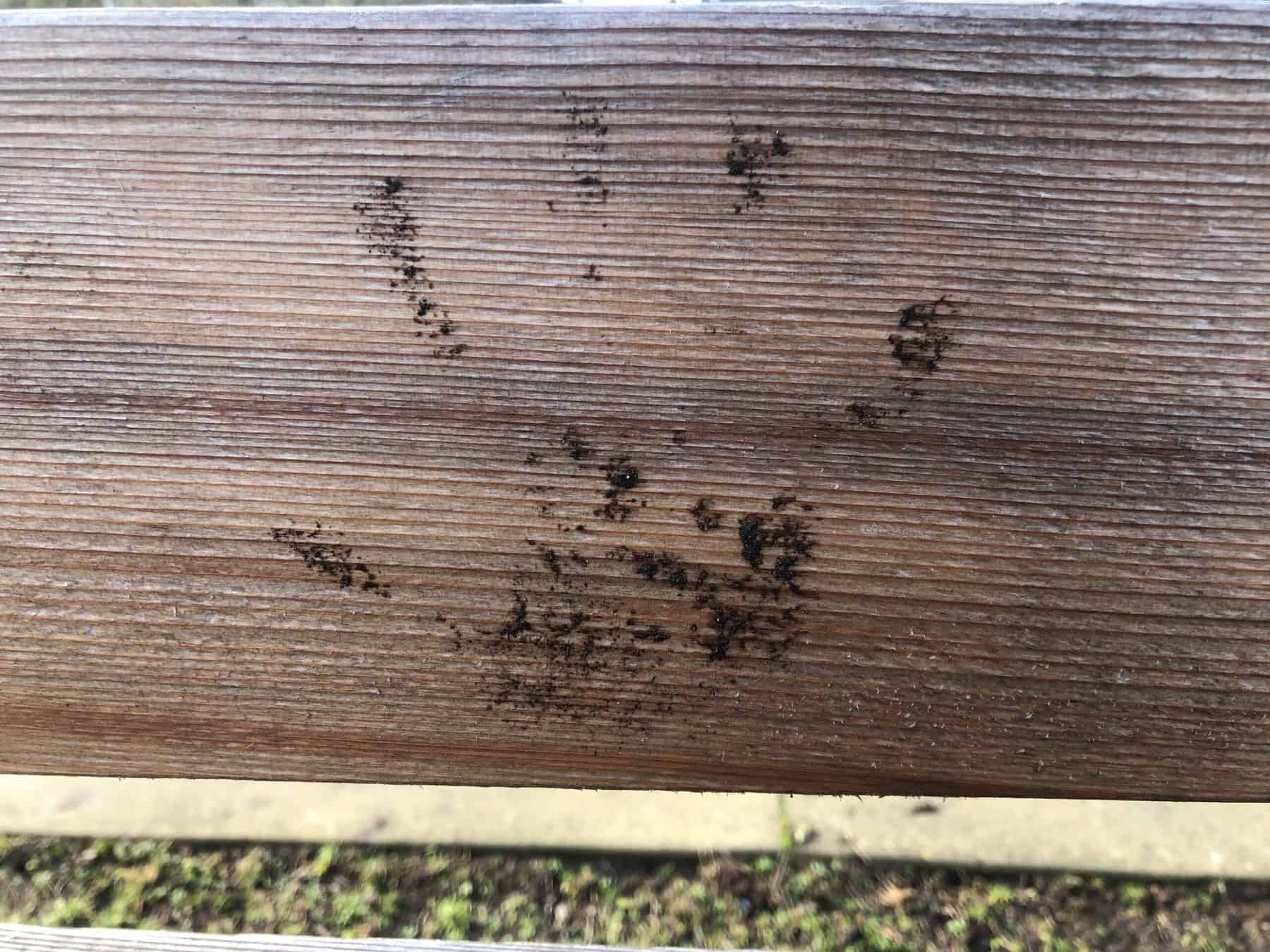
And if you don’t have paint brushes handy, simply use sticks- they are perfect tools for mud painting! Check out how these kids used sticks and mud for imaginative play: anywhere artists in our outdoor classroom!
Become an Anywhere Artist with Loose Parts
Thinking like an Anywhere Artist encourages us to find and make art from just about anything, anywhere! Here are some other ideas to inspire art making in your schoolyard, garden, at the beach, or in the forest:


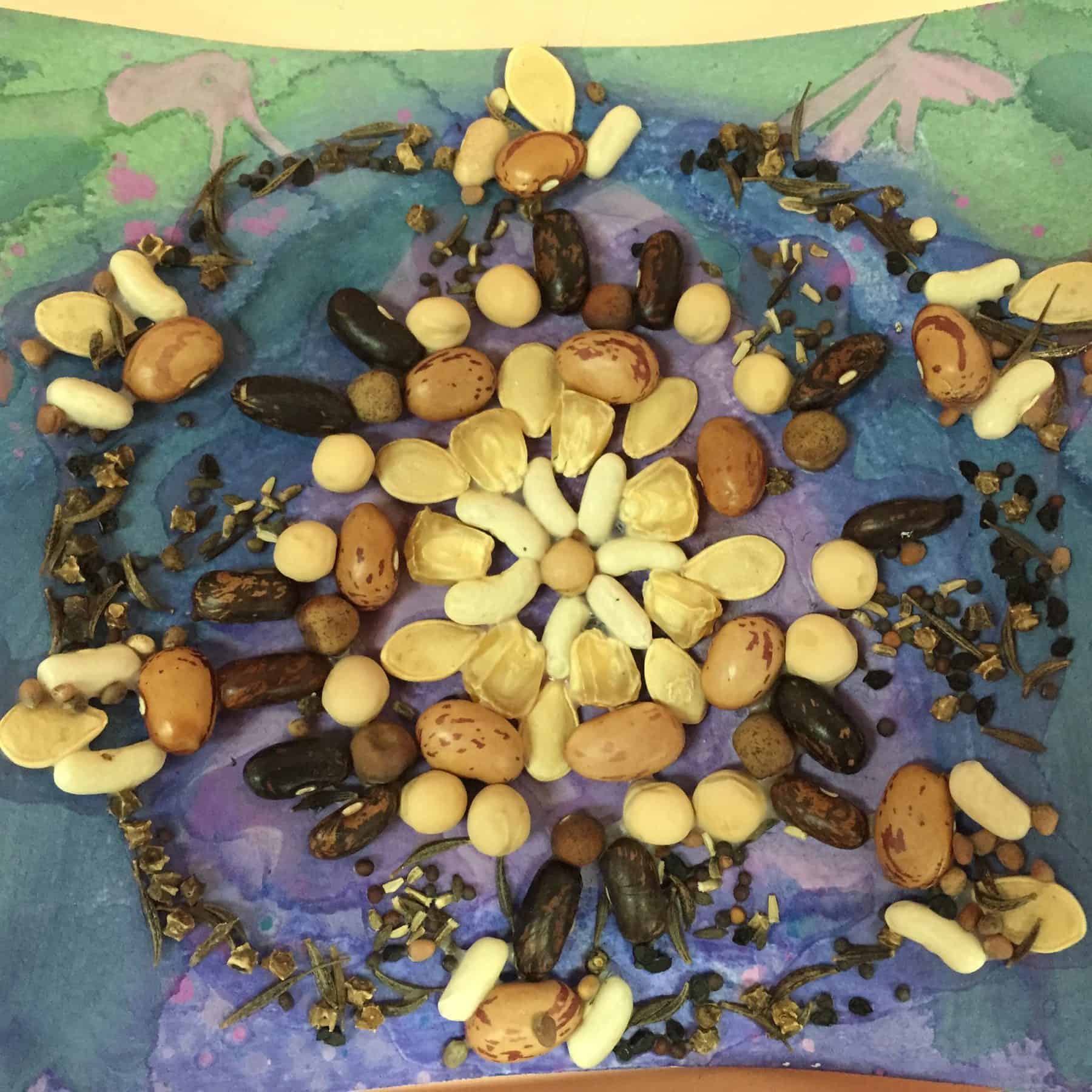

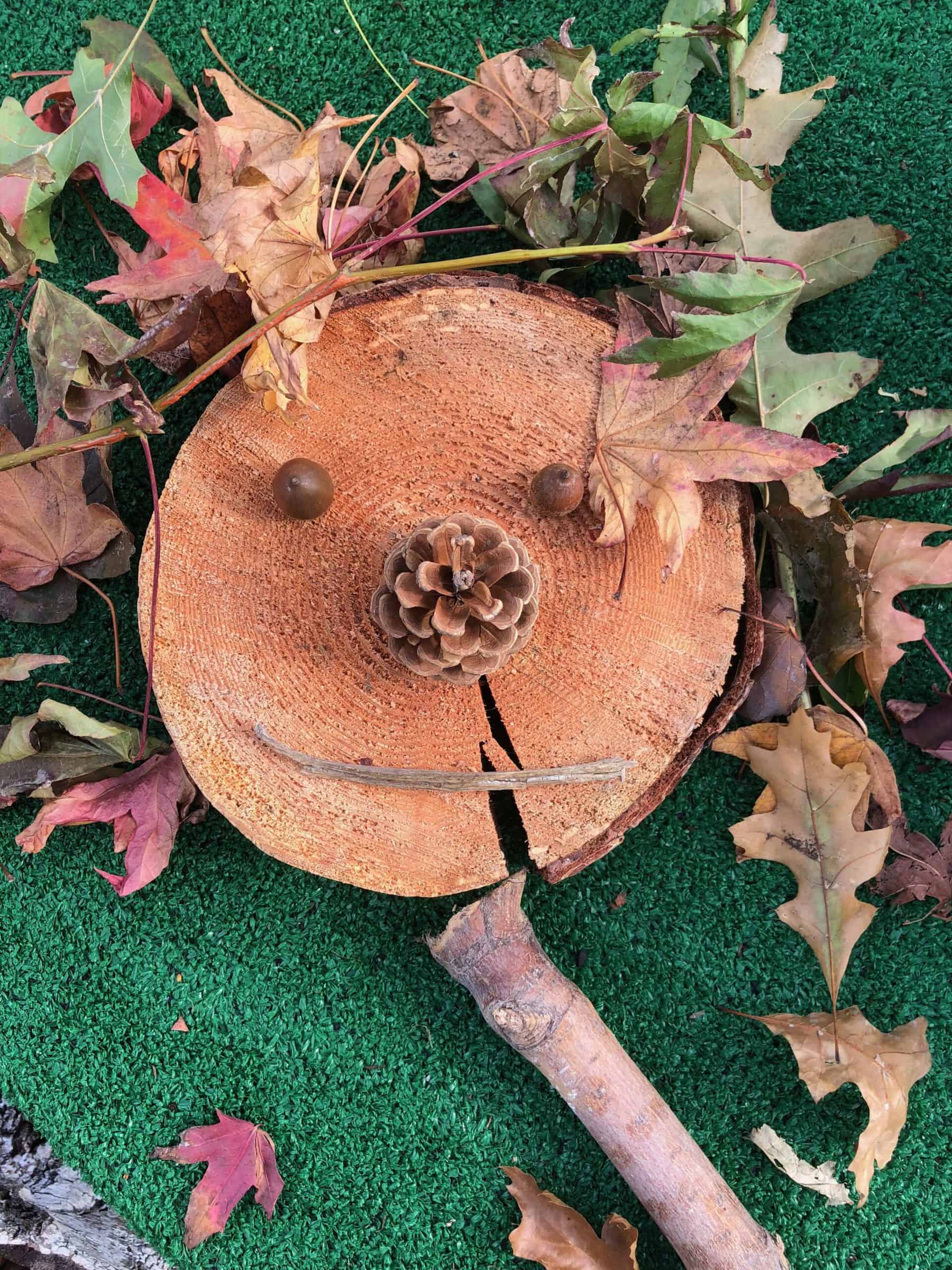


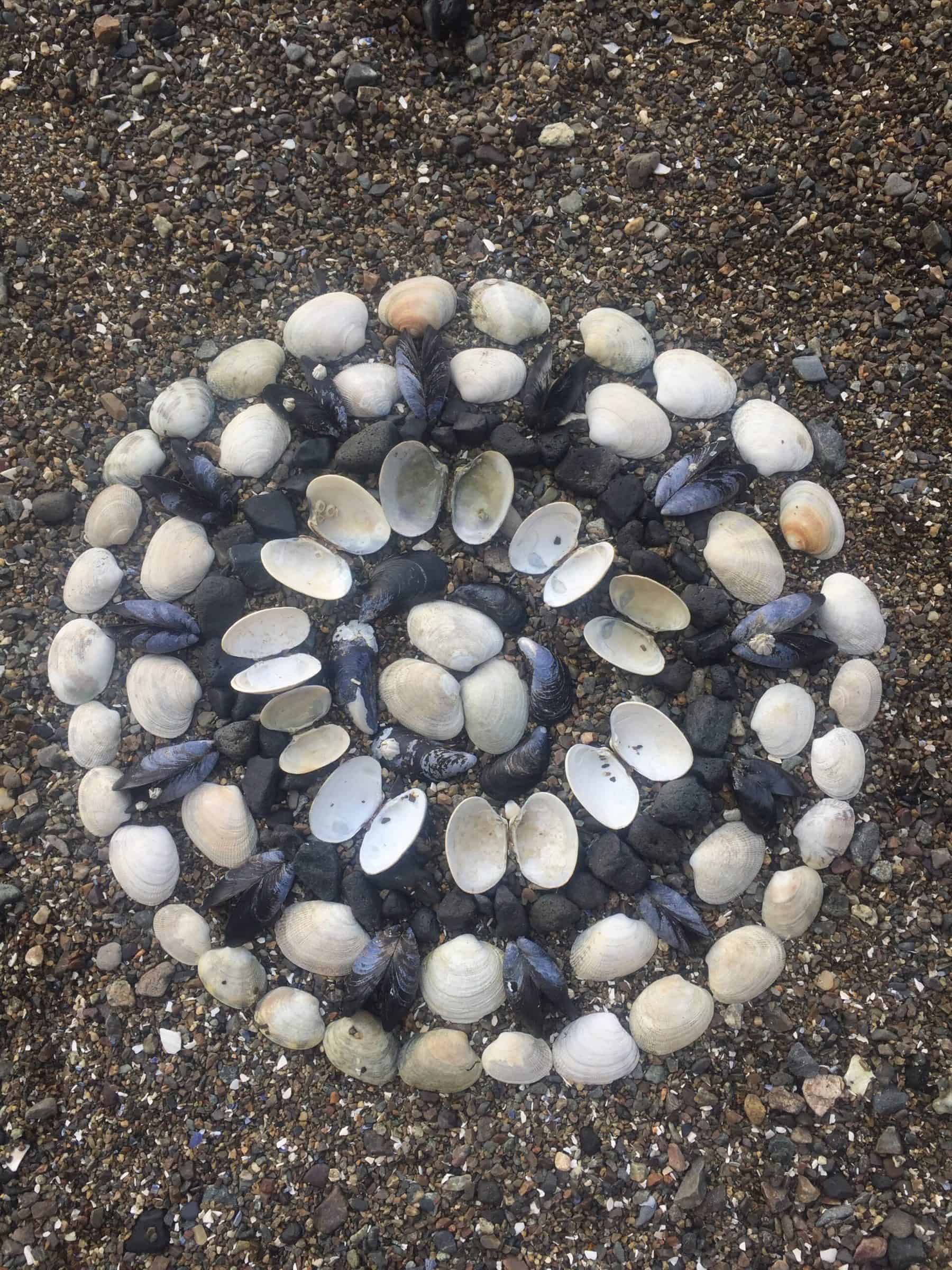


RELATED POST: How to make a seed mandala
RELATED POST: Playful learning with Dandelions
RELATED POST: How to build a mud kitchen
RELATED POST: Best books for encouraging loose parts play
I also recommend James Brunt’s work for inspiration as well. If you are on Instagram, he can be found at @jamesbruntartist where he shares out inspiring land art creations.
References and Resources
As a doctoral candidate in the faculty of education at UBC, I am deeply engaged in the theories and research that reinforce and question the significance and importance of unstructured play in healthy child development. Teachers and parents interested in learning more about the benefits of imaginative play cited in this post are encouraged to read the following papers:
Hakkarainen, P., Brėdikytė, M., Jakkula, K., & Munter, H. (2013). Adult play guidance and children’s play development in a narrative play-world. European Early Childhood Education Research Journal: Promoting Play for a Better Future, 21(2), 213-225. doi:10.1080/1350293X.2013.789189
Mann, S., & Cadman, R. (2014). Does being bored make us more creative? Creativity Research Journal, 26(2), 165-173. doi:10.1080/10400419.2014.901073
Russ, S. W., & PsycBOOKS. (2014;2013;). Pretend play in childhood: Foundation of adult creativity (First ed.). Washington, D.C: American Psychological Association. doi:10.1037/14282-000
Vygotsky, L.S. (2004). Imagination and creativity in childhood. Journal of Russian & East European Psychology, 42(1), 7-97. doi:10.1080/10610405.2004.11059210
Vygotsky, L. S. (2016). Play and its role in the mental development of the child. International Research in Early Childhood Education, 7(2), 3.
If you are looking for more imaginative ways to play outside, check out these curated ideas on Pinterest:

